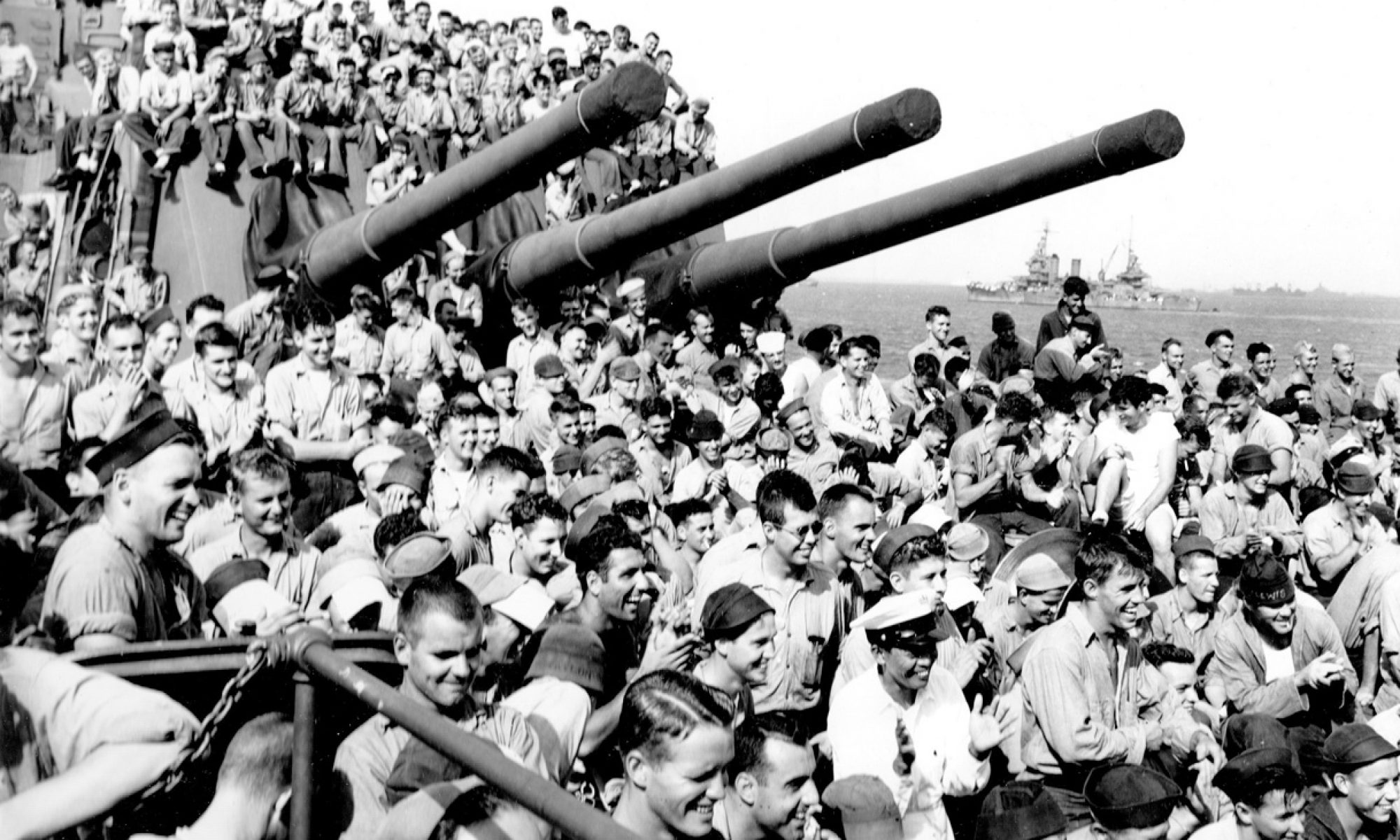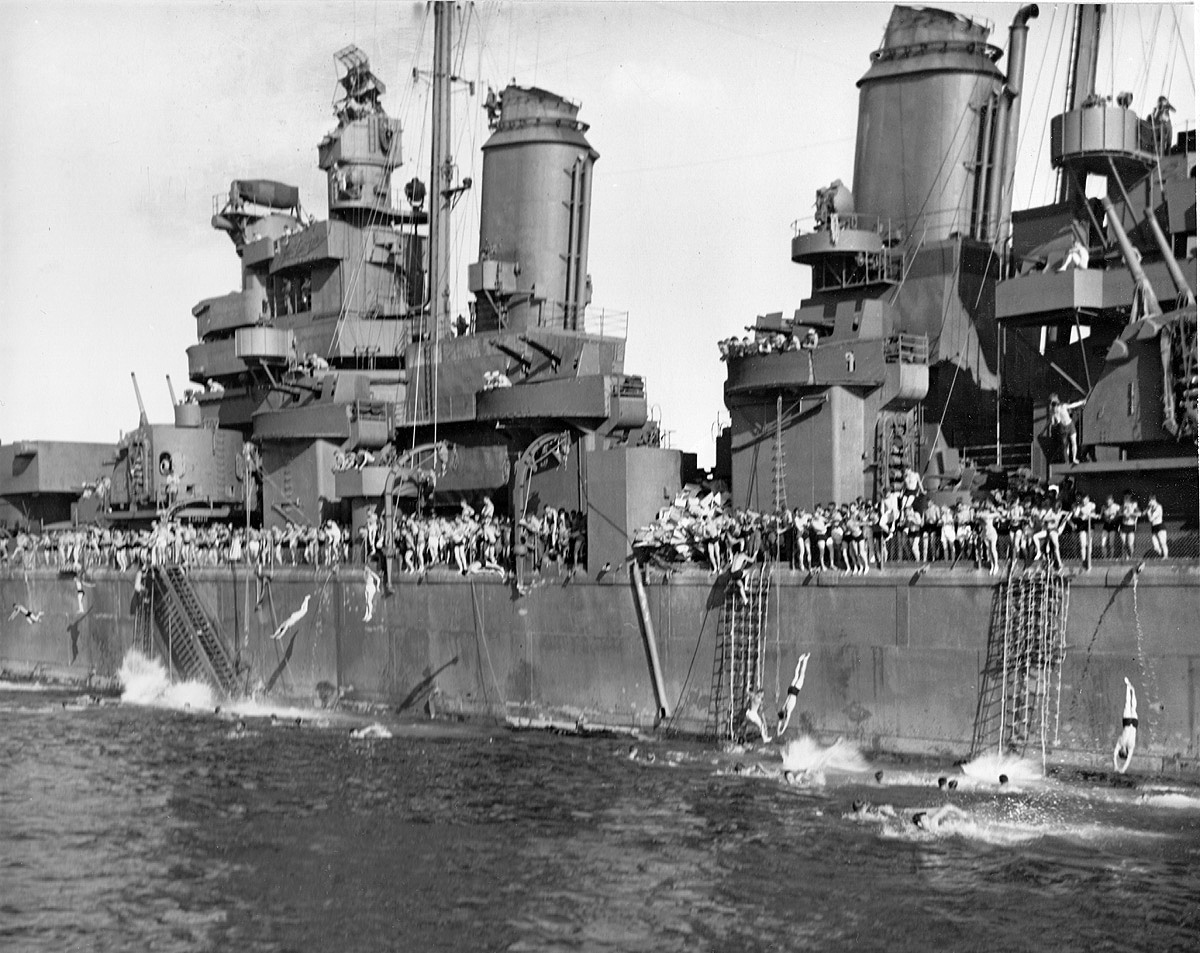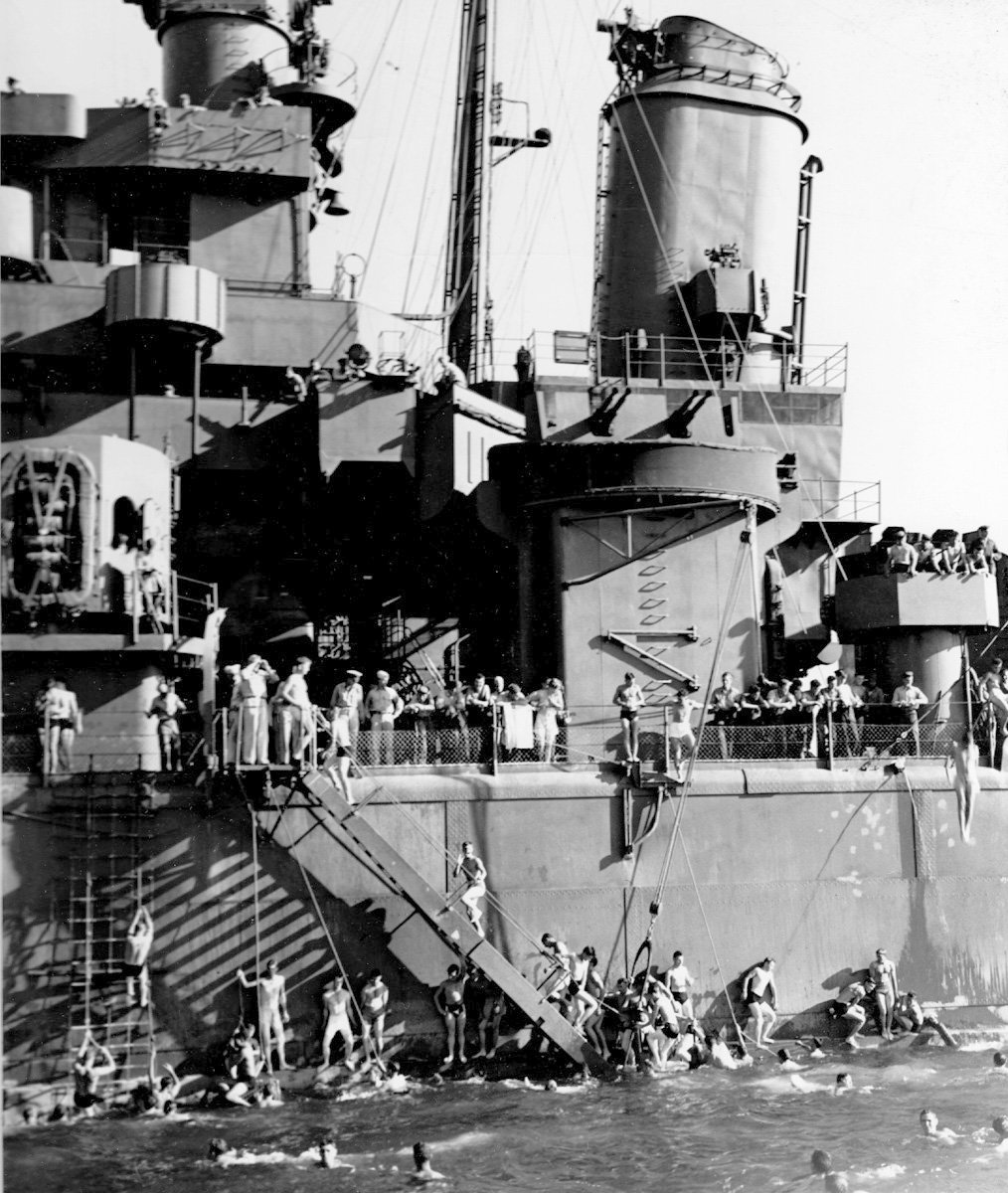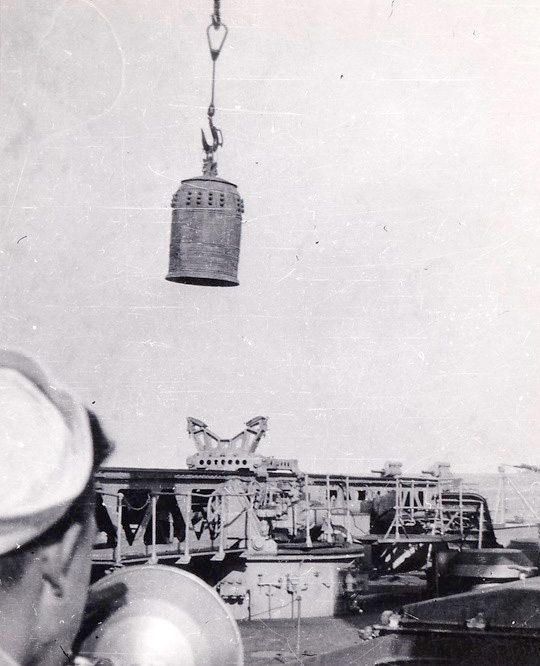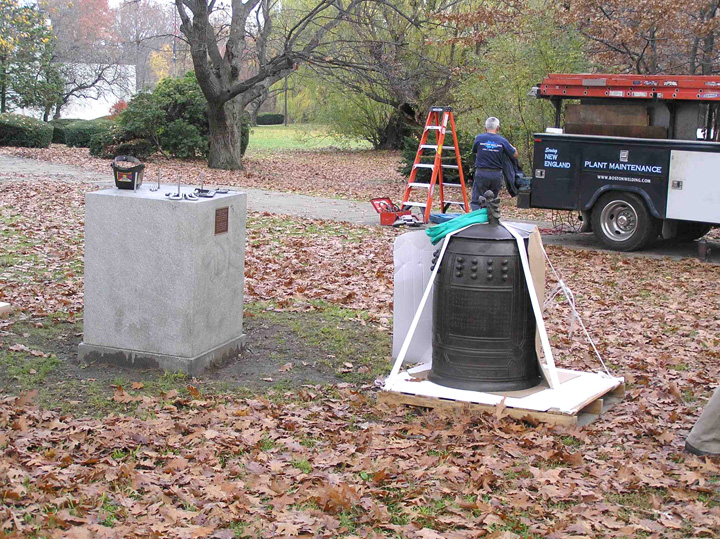Oct 3, 2016
During October, 1943, the ship was in the midst of a month-long shakedown cruise along the Atlantic coast. One year later, the Boston, a unit of Task Force 38, was in the midst of Operation King, a complex series of landings and strikes against targets in the Philippines that began September 1 and “ended” when the ship departed Iwo Jima in late February (1945.) During that October (1944), the men endured the aftermath of the Battle off Formosa (the Crippled Cruisers affair) and the Second Battle of the Philippine Sea. One year later, the men participated in the Demilitarization of Japan – ranging up and down Eastern Honshu, capturing arms, destroying suicide speedboats and suicide subs hidden in caves and coves by the hundreds.
I don’t think I can go the whole month without saying something about the Crippled Cruisers and the Tow of the Houston. I’m guessing I’ve done so each year this website has been in existence. I promise a slightly different POV this time, however. I am just returning home from a two week vacation “back east” – during which I got to meet my 3 month old granddaughter (my first). There was a little side-trip to Ogunquit, Maine, fulfilling an overdue promise to Roxanne that we would spend some time invading antique shops.
I found an awesome and fascinating book, written by a Japanese reporter (Masanori Ito) in 1956, “The End of the Imperial Japanese Navy” at Arrington’s Historical and Military Books (Ogunquit, ME). The author’s take on the events leading up to (and during) the Second Battle of the Philippine Sea from the Japanese perspective is really interesting. I guess I’m letting the cat’s head out of the bag a bit: I’m probably going to present a look at the “Streamlined Bait / Crippled Cruiser” affair rounded out with a different perspective . . .
Speaking of Arrington’s: I got to chatting with the owner (George Arrington) about my interest in the Central Pacific War. We talked some about the Boston. He sells lots of Cruise Books, along with all manner of books, photos, prints, etc., etc. He’s been in business since 1988 at the same location. He has never laid eyes on a CA-69 USS Boston Cruise Book.
Steve
